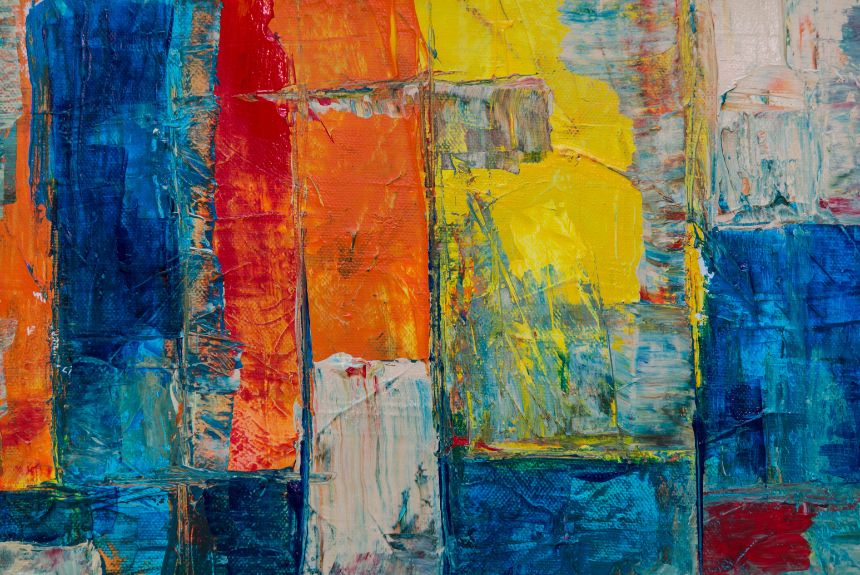Art has been an essential part of human civilization for thousands of years. It has evolved significantly, reflecting the changing times, cultures, and beliefs of societies throughout history. From the cave paintings of ancient civilizations to the contemporary masterpieces of today, the journey of art is a fascinating exploration of human creativity and expression.
I. The Dawn of Art: Cave Paintings and Petroglyphs
Human creativity has been present since the earliest times, as evidenced by the discovery of cave paintings and petroglyphs. These ancient artworks, dating back tens of thousands of years, provide insight into the lives and beliefs of our ancestors. The prehistoric artists used simple tools to create striking depictions of animals, hunting scenes, and religious rituals on the walls of caves, showcasing the primal connection between art and spirituality.
II. The Art of Antiquity: Egyptian and Greek Marvels
Moving forward in time, the art of antiquity brings us to the majestic civilizations of ancient Egypt and Greece. The ancient Egyptians produced stunning sculptures and paintings, emphasizing religious symbols and the significance of pharaohs and gods. On the other hand, Greek art celebrated the human form and its idealized beauty, influencing Western art for centuries to come.
III. The Renaissance: Rebirth of Art and Humanism
The Renaissance was a transformative period in art, marking a rebirth of creativity, humanism, and innovation. From Florence to Rome, artists like Leonardo da Vinci, Michelangelo, and Raphael produced masterpieces that combined technical skill with emotional depth. The rediscovery of classical Greek and Roman art and the emphasis on human expression and anatomy shaped the course of art history forever.
IV. Baroque and Rococo: Ornate Beauty and Drama
The Baroque and Rococo periods introduced a sense of drama, grandeur, and ornamentation to art. The Baroque style, with its use of light and shadow, conveyed intense emotions and religious fervor. In contrast, the Rococo period focused on elegance, playful themes, and intricate details, reflecting the opulence of the aristocracy and the lavish courts of Europe.
V. Romanticism: Emotion and Nature
The 19th-century movement of Romanticism put emphasis on emotion, individualism, and nature. Artists like William Turner and Caspar David Friedrich captured the sublime beauty of the natural world and evoked powerful emotions through their landscapes and seascapes. Romantic art encouraged personal introspection and a deeper connection to the natural world.
VI. Impressionism: Capturing Fleeting Moments
Impressionism revolutionized art in the late 19th century, with artists like Claude Monet, Pierre-Auguste Renoir, and Edgar Degas leading the way. Breaking away from traditional techniques, Impressionists sought to capture the fleeting effects of light and atmosphere. Their loose brushwork and vibrant colors paved the way for modern art movements.
VII. Cubism: Shattering Perceptions
Cubism, spearheaded by Pablo Picasso and Georges Braque, shattered traditional perceptions of reality. Through fragmented forms and multiple viewpoints, Cubist artists presented objects from different angles simultaneously. This innovative approach laid the groundwork for abstract art and challenged viewers to see beyond the surface.
VIII. Surrealism: The Unconscious Mind Unleashed
In the 20th century, Surrealism emerged as a movement that delved into the realms of the unconscious mind. Led by Salvador Dalí and René Magritte, Surrealist art juxtaposed dreamlike images with reality, challenging conventions and encouraging viewers to explore their own subconscious thoughts and feelings.
IX. Abstract Expressionism: Emotion on Canvas
Abstract Expressionism took the art world by storm in the mid-20th century, with artists like Jackson Pollock and Willem de Kooning at the forefront. This movement emphasized spontaneous, gestural brushwork and conveyed raw emotions on canvas. It provided artists with a platform for self-expression and a medium to communicate the complexity of human emotions.
X. Pop Art: Embracing Popular Culture
The Pop Art movement emerged in the 1950s, embracing popular culture and mass media imagery. Artists like Andy Warhol and Roy Lichtenstein celebrated consumerism and iconic symbols, blurring the line between high art and everyday objects. Pop Art challenged traditional notions of art and encouraged a critical examination of contemporary society.
XI. Contemporary Art: A Diverse Landscape
In the present day, contemporary art encompasses a vast and diverse landscape of artistic styles, techniques, and media. From conceptual art and performance art to installation and digital art, contemporary artists continue to push boundaries and challenge conventions, reflecting the complexities of our modern world.
XII. The Impact of Technology: Art in the Digital Age
The evolution of technology has revolutionized the art world, enabling artists to explore new forms of creativity through digital media and interactive installations. Virtual reality, augmented reality, and digital platforms have expanded the possibilities for artistic expression and audience engagement.
XIII. Art for Social Change: Making a Difference
In recent times, art has been increasingly used as a powerful tool for social change and activism. Artists around the world are using their work to address important issues such as environmentalism, human rights, and cultural representation, provoking conversations and inspiring action.
XIV. The Future of Art: Innovation and Continuity
As we look to the future, the evolution of art shows no signs of slowing down. Advancements in technology, changing social landscapes, and evolving artistic philosophies will continue to shape the trajectory of art in the years to come.
Conclusion
The evolution of art is a testament to the boundless creativity and resilience of humanity. From ancient cave paintings to the cutting-edge digital art of today, art has served as a mirror of society, a medium for personal expression, and a catalyst for change. As we celebrate the rich tapestry of artistic history, we eagerly anticipate the undiscovered masterpieces and groundbreaking movements that lie ahead.

